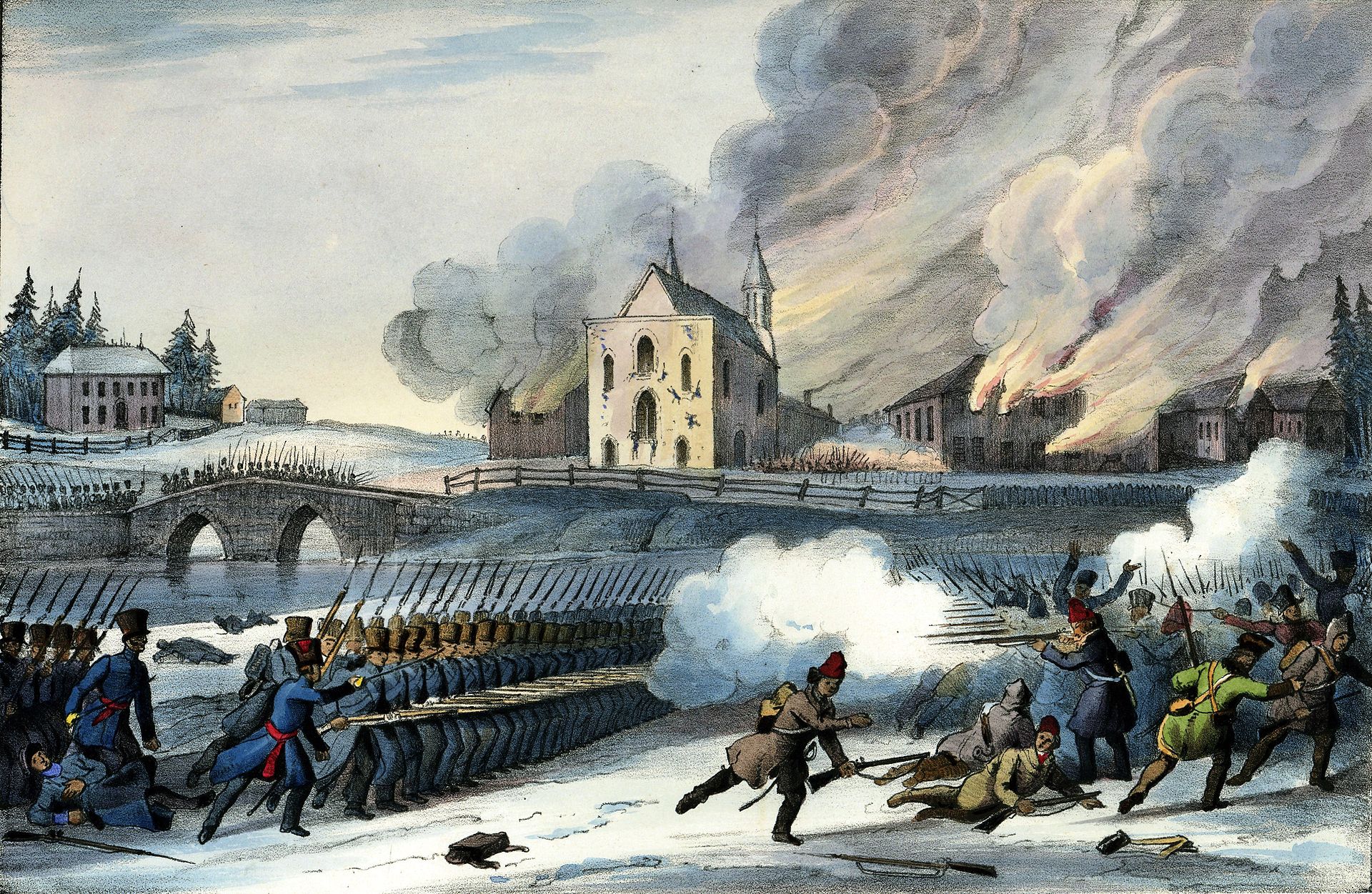A wife vs. the “Family Compact”
September 10th, 2025

Historical fiction typically sets the lives of imagined characters within real historical events. The Rebel’s Wife (Granville Island $24.95) by Vancouver author Gerald Richardson Brown re-crafts this formula, focusing on the peregrinations of authentic characters from a turbulent period of Canada’s early political history that readers may recall foggily from school as the time of the Family Compact.
Some historical background to start: after the War of 1812 when United Empire Loyalists fled to Upper Canada, a group of rigidly Conservative landowners and financiers emerged there as a new ruling colonial elite. This “Family Compact” exercised enormous power based on unflinching loyalty to its closed, hierarchic structure and self-interest. For more than thirty years, and despite there being an elected Assembly, by dominating finance and credit in what is now southern Ontario the Compact controlled government appointments and favours, and manipulated land ownership. Strict class intermarriage, fealty to the Anglican Church and the vehement rejection of American-style democracy were its hallmarks. Its influence extended to violence against opponents to its authority.
In 1837-38, taking leadership from crusading journalist-reformer William Lyon Mackenzie, desperately oppressed settlers took up arms against the Compact in poorly organized rebellions. Swiftly crushed, a number were hung. Further executions, or at best a brutal exile to Van Dieman’s Land Downunder—now known as Australia—awaited remaining captives. However, when unexpected popular resentment and pleas for mercy grew, fearing intervention from across the US border, senior British officials intervened to allow the festering atmosphere to cool down.
 The Rebel’s Wife shapes its narrative from this history, dwelling on one unique incident. In 1838, Maria Wait, a young wife and mother, witnesses her husband’s courtroom sentence of execution and quartering (yes, we used to dismember the bodies of hung convicts) for his role in the failed revolt. She pledges herself to saving his life. In recounting Maria’s extraordinary battle against every form of prejudiced, patriarchal and aristocratic disinterest of the day, the novel is rooted in surviving letters between Maria and her husband Benjamin, and on research left by witnesses to the rebellions in a thin line of previous accounts. It’s a remarkable tale.
The Rebel’s Wife shapes its narrative from this history, dwelling on one unique incident. In 1838, Maria Wait, a young wife and mother, witnesses her husband’s courtroom sentence of execution and quartering (yes, we used to dismember the bodies of hung convicts) for his role in the failed revolt. She pledges herself to saving his life. In recounting Maria’s extraordinary battle against every form of prejudiced, patriarchal and aristocratic disinterest of the day, the novel is rooted in surviving letters between Maria and her husband Benjamin, and on research left by witnesses to the rebellions in a thin line of previous accounts. It’s a remarkable tale.
Imprisoned for debt and cheated out of his mill by a Compact ally, Benjamin’s case obliges Maria to make a hazardous horse coach journey across the border to visit her aged father: she needs cash to redeem the debt. It’s a brave venture. Highwaymen plague the roads; inns are dangerous. When she is victimized, we see Maria’s true character emerge in confronting her antagonist.
Freed and thirsting for reform, Benjamin joins a fledgling rebel army with disastrous results. Jailed, the captives await grim futures. Page-turners are not always notable for their psychological depth, typically relying on quick action turnovers. The novel offers plenty of that, underscored by Maria’s burning determination which confirms her as an engaging character. Amidst detailing her struggles, the author evokes the rich seasonal imagery, landscapes and daily life of the Niagara River region.
Supported by her devout Christian faith, Maria negotiates arduous journeys throughout the Niagara and St. Lawrence Valleys to visit her husband and to meet officials, journalists and local religious groups. Readers can expect insightful portraits of colonial life in Toronto, Kingston and Montreal in Lower Canada. As her bravery attracts attention, even reluctant figures feel obliged to grant her a hearing. Her heartfelt plea is simple: “I can only trust that you will view our plight with the mercy given to us in sacred scripture.” With inchworm progress her campaign advances.
Maria’s solemn family encounters and maternal turmoil at leaving her daughter with relations humanize her while she petitions authorities far from home. Benjamin’s letters, written from convict hulks and prisons in Upper Canada, Liverpool and Downunder, expose the hell of an utterly unforgiving legal system, its ten-pound chains and the savage lashing even of children.
Packed with incidents, Maria’s heroism as a woman represents an insufferable truth for the Compact system. Yet she perseveres, becoming a renowned public speaker on behalf of all the sentenced rebels. When fund-raising enables her to undertake an Atlantic crossing, she sails to England in hope of speaking with young Queen Victoria. The writing during this hard, long voyage at nine knots per hour is some of the liveliest in the book. Maria’s interactions with fellow passengers, and one in particular during a vulnerable stretch, are convincing.
Richardson Brown hits real pace as Maria makes her way through London’s Whitehall power corridors. Charmed by the capital’s sophisticated culture, her odyssey here to gain an amnesty for the Canadian rebels suffers a lack of her usual progress, but gives readers a deeper exploration of colonial and imperial politics of the day. Maria’s association with the compassionate Quaker community especially, brings her into contact with Charles Dickens, Elizabeth Fry and other social reformers, offering some relief from her burdens. Ultimately, it is her faith and increasing moments of visionary prescience that sustain her.
Time passes quickly in affairs of state and public interest. By 1841, Maria has dedicated herself to mothering her little girl. With fortune come unanticipated developments. If Maria remains indomitable, Benjamin’s blind spots, in contrast, can make him appear self-absorbed; he would benefit from more self-reflection. There’s a complex ending. Again, these are real characters with fates that are known. This is a stirring book about early Canada with more than a few echoes for the future. 9781989467794

The Rebellions of 1837–1838 were two armed uprisings that took place in Lower and Upper Canada as pictured in this historical painting.
Trevor Carolan writes from North Vancouver.


Leave a Reply